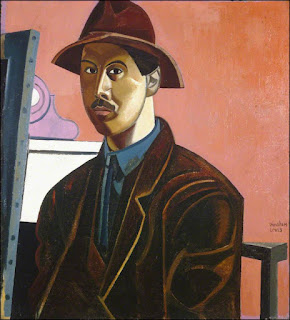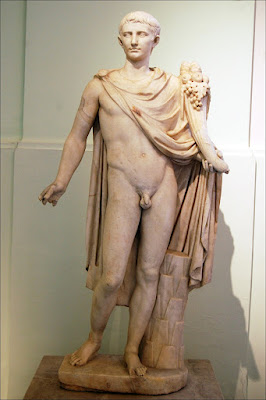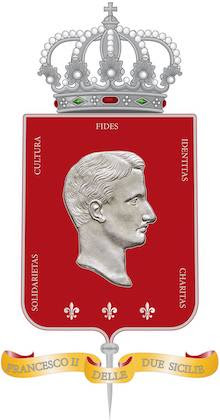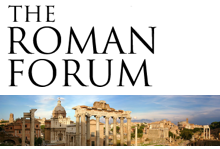I recently had the opportunity to view my friend's latest acquisition: The Portrait of King Ferdinando II of the Two Sicilies (Palermo 1810-1859 Caserta) attributed to Giuseppe Cammarano (Sciacca 1766-1850 Napoli). The inscription on the reverse of the painting states that this was the "First study for the picture at the embassy of Naples in Paris." Dressed in the uniform of the Illustrious Royal Order of Saint Januarius, the Basilica Reale Pontificia San Francesco da Paola of Naples can be seen in the background. In addition to being a portraitist of the royal family, Giuseppe Cammarano served as a professor at the Royal Academy of Fine Arts in Naples.
November 26, 2024
New Music — Luce D’Amore Divino: Neapolitan Christmas Songs by Franciscan Friars
• Luce D’Amore Divino: Neapolitan Christmas Songs by Franciscan Friars
Label: Nova Antiq
Release Date: October 30, 2024
Audio CD: $26.58
Number of Discs: 1
Available at Amazon.com
Read description
November 24, 2024
November 20, 2024
A Mass for Peace
 |
| www.musicatransalpina.org |
We are proud to present the first complete performance of this glorious Mass setting in modern times, performed for the first time in America. We hope that you will find its soaring melodies & noble harmonic language a moving call to peace in your own heart.
Concert performance
Saturday, November 30, 2024 at 7 PM
The parish church of S. Andrew
311 North Raymond Avenue
Pasadena, CA 91103.
Free liturgical performance
Sunday, December 1, 2024 at 9 AM
The parish church of Ss. Peter & Paul
515 West Opp Street
Wilmington, CA 90744.
November 17, 2024
November 15, 2024
Against Self-Expression
 |
| (L) Portrait of a man in a red cap, ca. 1510, Titian (Tiziano Vecellio). (R) Portrait of woman in d'hermine pass (Olga), 1923, Pablo Picasso |
Before we commenced with the semester’s proceedings, I figured we should at least attempt to define the word “art.” Students were made to write a paragraph answering the question before sharing their definitions with the class.
Much to my chagrin, yet not to my surprise, one particular and unfortunate aspect of art made itself present in almost each and every student response: Art is a mode of self-expression.
Why did each student mention self-expression in their definition of art as a matter of course? How did this concept become such an idée fixe in the collective mind?
There is no doubt that self-expression in art exists. That is fact. But why has self-expression become practically synonymous with art itself in the present day? From whence did self-expression originate? Was it always present in art?
In order to gain some clarity, let’s attempt to answer some of these questions. In the following paragraphs, I will as closely as possible follow the form and sequence of the discussion I led with my students in the lecture hall that day after they attempted to answer the question posed to them.
First, we must address the origins of self-expression in art. When asked, my students immediately proclaimed, without so much as giving it a thought, that self-expression dated back to the beginnings of art itself.
It does not.
The earliest examples of art, i.e. Venus figurines, cave paintings, images carved into pre-historic temples and the like simply cannot be described as results of self-expression. The collective efforts involved, directed by an overarching spiritual impulse, immediately negates any semblance at all of prehistoric art to modern self-expression. That our modern idea of self-expression has been grafted upon these early works of art is preposterous.
How can we ascribe our modern concept of individuality to prehistoric peoples who relied so heavily upon the collective for their very survival, both physically and spiritually?
We cannot.
So what of the ancient world, then? Surely this self-expression we speak of must have existed in the ancient world?
No, it did not.
An artist of antiquity simply performed the task he was assigned. Pharaoh, emperor, and high priest all dictated what to carve and paint. Even those ancient Greek sculptors and painters of renown, of highly developed skill and a sensitivity to form were more akin to what we would deem artisans by today’s standards.
 |
| (L) Idealized Portrait of a Lady (Portrait of Simonetta Vespucci as Nymph), 1480, Sandro Botticelli. (R) Portrait of a Young Woman, ca. 1918, Amedeo Modigliani |
In the Renaissance, we begin to see a cult of personality emerge, names of individual artists recorded for posterity, and their life stories recounted time and again. Most importantly, art becomes replete with the discernible styles of individual artists.
Does this constitute self-expression?
No, it doesn’t.
Art of the Renaissance does not embody self-expression in the present sense of the term. Artists were still beholden to God, Church, and patron in that order. At least for the time being.
However, the seeds of destruction of the eternal impulse of art itself were being sowed during this time. The flowers, though growing a little more poisonous each generation, were breathtaking, at least for a few centuries.
It was only in the late 19th and early 20th centuries, that these flowers, once tender with the promise of spring, withered and died before our very eyes in the cold winter of a new world. But not before imparting their poison, blinding their beholders. In short order, the artist was finally “liberated” once and for all from the confines of the spiritual, the hierarchical, and the conventional. Here marks the birth of our modern, ubiquitous concept of self-expression.
So what exactly happened?
Secularly speaking, the visual arts suffered due to several contributing factors of modernism. For example, the mechanization afforded by the Industrial Revolution allowed for the French painter and physicist Charles Daguerre (1787-1851) to invent the Daguerreotype in 1817, thus ushering in the age of photography. Though we take this modern amenity for granted, photography was revolutionary - and deadly to the time-honored naturalistic painting processes already established nearly six hundred years previously. No longer was painting the most effective way to fix a three-dimensional image upon a two-dimensional surface.
Photography laid waste to representational painting, and in a few generations, the requisite skill necessary for painting was inevitably replaced by abstraction. Following in the wake of the widespread acceptance of abstraction came the artist’s reliance on his “unique and individual view” of the world. All in lieu of the well-established representational tradition, a tradition artists were no longer beholden to follow.
As a result, the art academies with their “elitist” mentalities and their “high standards” in regards to accepting and educating students were no longer considered to be the bastions of culture and learning they once were. Instead, they were seen as “rear guard;” effete and ineffectual, the stuffy and stodgy domain of old academicians, out of step with the times.
Another invention worth mentioning that was detrimental to representational art was that of the collapsable paint tube, patented in 1841 by American painter and inventor John Goffe Rand (1801-1873). The paint tube allowed artists portability and freed them from their studios, enabling them to paint out of doors, albeit in an increasingly flat, impetuous and superficial manner. Gone were the months of thoughtful and studious labor necessary to craft a painting. Instead, the artist traded nuanced skill for rapidity, and subtle application of delicate glazes for the matter-of-fact flatness of the alla prima technique. Sadly, over time the erosion of the artist’s skill became accepted fact.
 |
| (L) Portrait of Isabel Rawsthorne, 1966, Francis Bacon. (R) Girl with a Pearl Earring, ca. 1665, Johannes Vermeer |
Self-expression now took the place of tradition and became an ideal entrenched in the minds of artist and viewer alike. At its best, self-expression became a term which in most instances could be considered interchangeable with the word narcissism. At its worst, self-expression existed as a shameful display of the workings of a largely disordered inner state.
On the spiritual side, the story grew existentially more grim with the passage of time. The rejection of the spiritual brought about by the Age of Enlightenment resulted in the beginnings of a major shift in patronage away from the Church and towards secular institutions. This hierarchical shift was detrimental to the religious artist who had been practicing his craft since time immemorial. As religious art waned, the popularity of secular art increased, and a good portion of it became self-referential to a fault. Artists generally no longer aspired to spiritual ideals. Instead, they unceasingly worshipped at the altar of the self, no matter how profoundly deranged that self was.
Philosophically, art after the Age of Enlightenment devolved in a most dangerous fashion. Over the last century and a half, the eternal ideals which were once the given philosophic domain of art were replaced with du jour relativistic uncertainty. Gathering momentum, this uncertainty culminated in Postmodernism.
With its resistance to hierarchies and its insistence that there exists no overarching meta-narrative, the Postmodernist ideology is perturbing to any sane mind to say the least. Postmodernism has enabled and elevated the idea of self-expression to an ultimate, banal and meaningless terminus. Under the aegis of Postmodernism, self-expression continues to be a deliberate affront hiding in plain sight; a purposeful contradistinction to the ideal of self-sacrifice for the greater good, which is the embodiment and vivifying essence of the Christianized Western World.
Thus, the aforementioned has lead us to an impasse. Fortunately, however, the present situation is neither inexorable nor inextricable. A critical mind is indeed necessary when considering the dangers of self-expression; the singular, crucial facility that can lead our world towards a sane ideation of what art always was and what it should again be: selfless-expression.
Art is the visible result of the search for and attainment of greater meaning, reflective of beauty, ideal and truth.
Once a meaning-oriented selfless-expression in art becomes imperative in the mind of viewer and artist alike, it is then incumbent upon the artist to orient himself towards this greater meaning and create accordingly.
By Prof. Pico Retrocelli
November 14, 2024
Brief Excerpt from "The Demon of Progress in the Arts" by Wyndam Lewis
 |
| Portrait of the Artist as the Painter Raphael, Wyndam Lewis (1882-1957) |
"Meanwhile, the great suspense is a factor of daily, unrelenting ruin. The enormous cost entailed by the fabulous armaments imposed on both sides in the preparation for the next war is alone sufficient to bleed us white, to maintain a dangerous fever in all our blood; and, since the arms we are now manufacturing are potentially so destructive that when at length they are used they may entirely alter our lives, they are responsible for the great suspense.
"Well. Unless human beings are going to experience the same deterioration in the very tissues of which their bodies are composed, unless their skins are to lose their resilience, their warmth, and all the other qualities which make them so high class a covering for a man to have; unless nature is to begin to take less trouble over our nails, our hair (that may disappear altogether), our wonderful shining eyes, which may become dull and myopic, so that spectacles must be provided for all from the cradle onwards unless all this is to come about there will have to be some great revolution. That is why talking about the alarming outlook for the fine arts appears so trivial a matter when one has finished writing about it. It is infected with the triviality of everything else."
Reprinted from The Demon of Progress in the Arts by Wyndam Lewis, Henry Regency Company, 1955, pp.96-97
Meridiunalata: Nun Fa ‘A Gelosa by Cav. Charles Sant’Elia
Nun Fa ‘A Gelosa
Cara mia
Nun fa’ ‘a gelosa,
Si me vide ‘e chiágnere addenucchiato,
Si me siente ‘e murmulià int’’o scuro-
Songo nnammurato ‘e n’ombra
Fina e bella
Ca ‘a tantu tiempo stongo ncuntranno
‘A strata d’’e Tribbunale.
‘A quanno aggio tenuto
Sta capuzzella dint’a sti mane,
Me songo nnammurato.
Nce faccio nu refrisco a ll’ánema
E spero si i’ arrivo a saglì ‘o’ priatório
Ca ‘o facisse tu pe me.
Don’t Be Jealous
My dear
Don’t be jealous,
If you see me kneeling and crying,
If you hear me murmuring in the dark-
I’m in love with a phantom
Fine and beautiful
That I’ve been meeting for some time
In the Via dei Tribunali
From when I held
This little skull in these hands,
I’ve been in love.
I offer a suffrage to her soul
And I hope that if I manage to ascend purgatory
That you’d do so for me.
* Self-published in 2010, Meridiunalata / Southernade is a treasury of poems gleaned from Cav. Sant'Elia's previous collections (Nchiuso dint''o presente, 'A cuntrora, and 'O pino e l'éllera), which were circulated among friends in New York City and Naples. Special thanks to Cav. Sant'Elia for allowing us to reprint his poetry and translations.
November 13, 2024
November 12, 2024
A Look at the “Siena: The Rise of Painting, 1300–1350” Exhibition at the Metropolitan Museum of Art
 |
| Virgin and Child with Saints Dominic and Aurea, and patriarchs and prophets, ca. 1312-15, Duccio di Buoninsegna (active 1278-1318) |
With over a hundred works drawn from the collections of The Met, the National Gallery in London, and dozens of other lenders, The Metropolitan Museum of Art's ongoing exhibit Siena: The Rise of Painting, 1300–1350, is an absolute triumph of the sublime. Boasting an impressive array of paintings, sculptures, and textiles by influential Sienese masters such as Duccio, Lorenzetti, Martini, and others, the viewer is offered an exhilarating glimpse of the dawn of the Italian Renaissance. Rooted in faith and tradition, it is a glorious celebration of Western art.
Upcoming exhibits of note at the Met Fifth Avenue:
• Caspar David Friedrich: The Soul of Nature (February 8—May 11, 2025)
 |
| (L) Madonna and Child, ca. 1290-1300, Duccio di Buoninsegna. (R) The Annunciation, 1311, Duccio di Buoninsegna |
 |
| Crucifixion with Saints Nicholas and Gregory, and the Redeemer with Angels, ca. 3111-18, Duccio di Buoninsegna |
 |
| Back Predella of Maestà Altarpiece at Siena Cathedral, ca. 1308-11, Duccio di Buoninsegna |
 |
| (L) Madonna del Latte, ca 1325, Ambrogio Lorenzetti (active 1319-47). (R) Saint Sabinus before the Roman Governor of Tuscany, 1335-42, Pietro Lorenzetti (active 1320-48) and workshop |
 |
| (L) Virgin and Child with Saints and Angels, ca. 1350, Lippo Memmi (active 1317-56). (R) Virgin and Child with Four Saints and Dominican Nun, ca. 1325, Simone Martini (active 1315-44) |
 |
| (L) Enthroned Virgin, first half 14th century, Goro di Gregorio (active ca. 1300-1334). (R) Man of Sorrows, ca. 1329-32, Tino di Camaino (ca. 1280–ca. 1337) |
 |
| Detail of the Mystic Marriage of St. Catherine depicting St. Margaret of Antioch striking the demon Beelzebub with a hammer |
 |
| Virgin and Child and Man of Sorrows, ca. 1340-45, Pietro Lorenzetti (active 1320-48) |
 |
| The Temptation of Christ on the Mountain, ca. 1308-11, Duccio di Buoninsegna |
 |
| Virgin and Child and St. Andrew, ca. 1326-30, Simone Martini (active 1315-44) |
 |
| St. Ansanus and St. Luke, ca. 1326-30, Simone Martini (active 1315-44) |
 |
| Christ Carrying the Cross from the Belles Heures of Jean de France, Duc de Berry, 1405-8/1409, the Limbourg Brothers (active 1399-1416) |
 |
| (L) Angel Gabriel, ca. 1335-40, Simone Martini. (R) Christ Discovered in the Temple, 1342, Simone Martini (1315-44) |
 |
| Christ Carrying the Cross and The Crucifixion, Orsini Polyptych, ca. 1335-40, Simone Martini (1315-44) |
 |
| Stories from the Life of St. Nicholas, ca. 1332-34, Ambrogio Lorenzetti (active 1319-47) |
Voices of Heritage: From Beneventan Manuscripts to Modern Music Through the Lens of Innovation
The Conservatorio Statale di Musica "Nicola Sala" of Benevento cordially invites you to join us for a remarkable two-day event in New York City, celebrating the ancient Beneventan chants and their evolution into modern music.
Tuesday, November 19th, 2024
4:00 pm – 6:00 pm
A Discussion on the Beneventan Manuscripts
Italian Cultural Institute
686 Park Avenue
New York, NY 10065
Guests are warmly invited to enjoy refreshments following the discussion.
*
Wednesday, November 20th, 2024
8:00 pm – 9:00 pm
The Conservatorio Statale di Musica "Nicola Sala" performing for the first time in New York, presents its inspiring repertoire.
Carnegie Hall
Weill Recital Hall
154 W 57th St., New York, NY
This exclusive event is offered with our compliments.
RSVP here to reserve your tickets, which will be provided upon confirmation.
We look forward to sharing this extraordinary celebration of heritage and innovation with you.
November 7, 2024
Helping Preserve Another Great Collection (Part 6)
 |
| Stamp for King Ferdinando I of the Two Sicilies' Commissioner of the Crown with the coat-of-arms of the Kingdom |
 |
| (L-R) Società Italiana Circolo Napolitano medal, Masaniello figurine, and Sicilian Paladin pin |
 |
| Società Italiana Circolo Napolitano medal |
 |
| Masaniello figurine |
 |
| Sicilian Paladin (possibly Orlando) pin |
 |
| Marranzani |
 |
| Questions and Answers on Regulations Concerning Aliens of Enemy Nationalities booklet |
 |
| Illustration depicting an Italian organ grinder with American Indian |
 |
| 20-cent postage stamp from Micronesia with image of King Roger II of Sicily |
 |
| Cinderella stamps with the coat-of-arms of the Kingdom of the Two Sicilies |
• Helping Preserve Another Great Collection (Part 1)
• Helping Preserve Another Great Collection (Part 2)
• Helping Preserve Another Great Collection (Part 3)
• Helping Preserve Another Great Collection (Part 4)
• Helping Preserve Another Great Collection (Part 5)
November 6, 2024
Book Twelve of the Heritage of Western Greece Series: Empedocles in Sicily
• Empedocles in Sicily edited by Jessica Elbert Decker, Jennifer Ferriss-Hill, and Heather L. Reid
Publisher: Parnassos Press - Fonte Aretusa
Publication Date: October 29, 2024
Hardcover: $50.00
Paperback: $40.00
Language: English
Pages: 339
Read description
Click here to see more books
Listing does not imply any endorsement
November 5, 2024
November 4, 2024
A Prayer for Valencia, Spain
Our thoughts and prayers go out to the victims of the deadly floods that devastated eastern Spain. The loss of life, the suffering, and the destruction deeply saddens us. May Santiago Apóstol, San Vicente Mártir, San Gregorio Taumaturgo, and Our Lady of Montserrat watch over you.
San Vincenzo di Saragozza, ora pro nobis
Prayer to St. Vincent of Zaragoza
Almighty God, whose deacon Vincent, upheld by thee, was not Terrified by threats nor overcome by torments: Strengthen us, we beseech thee, to endure all adversity with invincible and steadfast faith; through Jesus Christ our Lord, who liveth and reigneth with thee and the Holy Spirit, one God, for ever and ever.













.jpg)









